Beneath the glossy showroom finishes and impressive spec sheets lurk mechanical time bombs waiting to explode in your driveway. Car manufacturers rarely advertise the chronic failures that plague their most popular engines.
The stylish Audi TFSI shown here joins a notorious lineup of powerplants that have drained bank accounts and crushed dreams of reliable motoring. These engines share common traits: initial praise from automotive journalists, strong performance figures, and catastrophic design flaws that emerge once warranties expire.
Owners worldwide have learned hard lessons about these mechanical nightmares through costly repairs and stranded roadside experiences that no sales brochure ever mentioned.
1. Volkswagen 1.9 TDI (AXR)
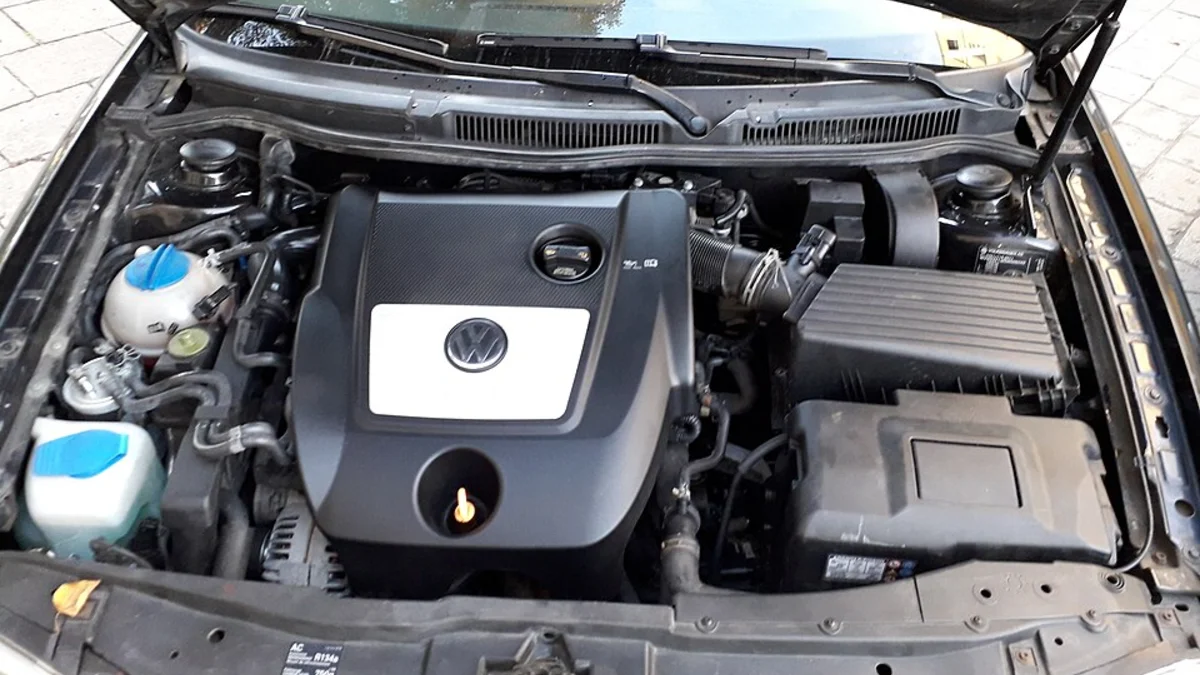
The AXR variant of Volkswagen’s 1.9 TDI engine gained notoriety among owners for several significant issues. Turbocharger failure ranks among the most common complaints, with many units failing prematurely around 60,000-80,000 miles. These failures often announce themselves through black smoke, loss of power, and strange whistling noises during acceleration.
Early warning signs include oil leaks near the turbo housing and inconsistent power delivery. Fuel consumption also disappoints many owners, falling short of advertised efficiency figures by considerable margins. The engine uses more diesel than expected, especially in urban driving conditions.
Some owners report fuel economy dropping by 20% after several years of ownership. Additionally, the AXR suffers from EGR valve clogging issues that can trigger check engine lights and rough idle. Intake manifold carbon buildup compounds these problems, restricting airflow and further reducing efficiency.
Many mechanics advise frequent cleaning of these components to maintain reasonable performance. Repair costs for the turbocharger alone can exceed $1,500, making ownership costs much higher than anticipated for what was marketed as a reliable powerplant.
2. BMW N47 Diesel Engine

BMW introduced the N47 diesel engine to much fanfare, but it quickly became synonymous with timing chain failures. Located at the rear of the engine against the firewall, the timing chain requires complete engine removal for replacement, turning a routine maintenance job into a major financial burden. Owners typically encounter problems between 40,000-80,000 miles when the chain stretches beyond acceptable limits.
Warning signs include a distinctive rattling noise during cold starts that gradually worsens until catastrophic failure occurs. Complete engine replacement becomes necessary in severe cases, costing upwards of $7,000. BMW acknowledged these issues but never issued a comprehensive recall, leaving many owners feeling abandoned.
Models manufactured between 2007 and 2011 seem most susceptible to these failures. Beyond the notorious timing chain problems, the N47 also suffers from swirl flap failures that cause loss of power and excessive exhaust smoke. Fuel injectors frequently develop issues, causing rough running and starting problems.
Maintenance costs run significantly higher than comparable diesel engines, making long-term ownership a financial gamble that many come to regret.
3. Audi 3.0 TDI V6 (CJR)

Audi’s CJR version of the 3.0 TDI V6 delivers impressive power and torque but harbors a potentially devastating flaw in its oil pump system. Failures typically occur without warning, quickly leading to oil starvation and subsequent engine seizure. Cars affected by this issue often require complete engine rebuilds costing upwards of $8,000. Oil pressure warning lights sometimes provide the only indication of impending failure, giving owners mere minutes to shut down the engine before permanent damage occurs.
The problem stems from a design flaw where metal particles from normal engine wear can block crucial oil channels. Vehicles with higher mileage face increased risk, especially those driven aggressively. Serpentine belt tensioner failures also plague this engine, causing unusual noises and potential belt failure when not addressed promptly.
Owners report frustration with cooling system components that deteriorate prematurely, leading to overheating issues. Factory-filled coolant often requires replacement earlier than specified in maintenance schedules. The engine management software sometimes makes matters worse by failing to properly alert drivers to developing problems until significant damage has already occurred.
4. Fiat 1.9 JTD Diesel Engine

Fiat’s 1.9 JTD diesel developed a concerning reputation among owners for multiple reliability issues. Turbocharger failures occur with alarming frequency, typically preceded by reduced power output and blue-tinted exhaust smoke. Repair costs often reach $2,000 including labor. The EGR valve consistently clogs with carbon deposits, causing rough idling and starting difficulties.
This requires frequent cleaning or replacement to maintain proper functioning. Fuel injectors develop leaks and uneven spray patterns, resulting in poor combustion, increased emissions, and failed inspections. Camshaft wear accelerates in engines that miss oil change intervals, leading to expensive top-end repairs. Many owners report overheating issues stemming from radiator efficiency loss and water pump failures.
Cold weather starting proves particularly troublesome as glow plugs frequently fail, requiring multiple attempts before successful ignition. Diesel particulate filters clog prematurely, especially in vehicles used predominantly for short trips. The engine control unit sometimes misinterprets sensor data, triggering false warning lights that lead to unnecessary diagnostic costs.
Despite these concerns, proper maintenance can extend engine life, though costs typically exceed comparable engines from other manufacturers by a considerable margin.
5. Peugeot 1.6 HDi

The Peugeot 1.6 HDi became notorious for its problematic diesel particulate filter system. This component frequently clogs during urban driving with short journeys, preventing proper regeneration cycles. Warning lights activate when the filter reaches capacity, requiring an immediate highway drive at sustained speeds to clear deposits.
Ignoring these warnings leads to expensive replacement costs exceeding $1,200. Timing belt issues also plague this engine, with recommended replacement intervals substantially shorter than competitor engines. Failure occurs catastrophically, bending valves and causing extensive internal damage. Oil pump failures appear at higher mileages, resulting in rapid engine wear when pressure drops below critical levels.
Turbocharger actuators develop electronic faults, causing inconsistent boost and acceleration hesitation. The dual-mass flywheel wears prematurely, creating transmission vibration and difficult gear changes. Water pumps leak earlier than expected, leading to coolant loss and potential overheating. Injector seals harden and crack over time, allowing fuel to leak into the cylinder head.
Sensor failures trigger limp mode activation, drastically reducing power without warning. Despite these issues, some owners report satisfactory experiences when maintenance schedules are strictly followed, but unexpected repair costs make ownership a financial risk many come to regret.
6. Mercedes-Benz OM642 V6 Diesel
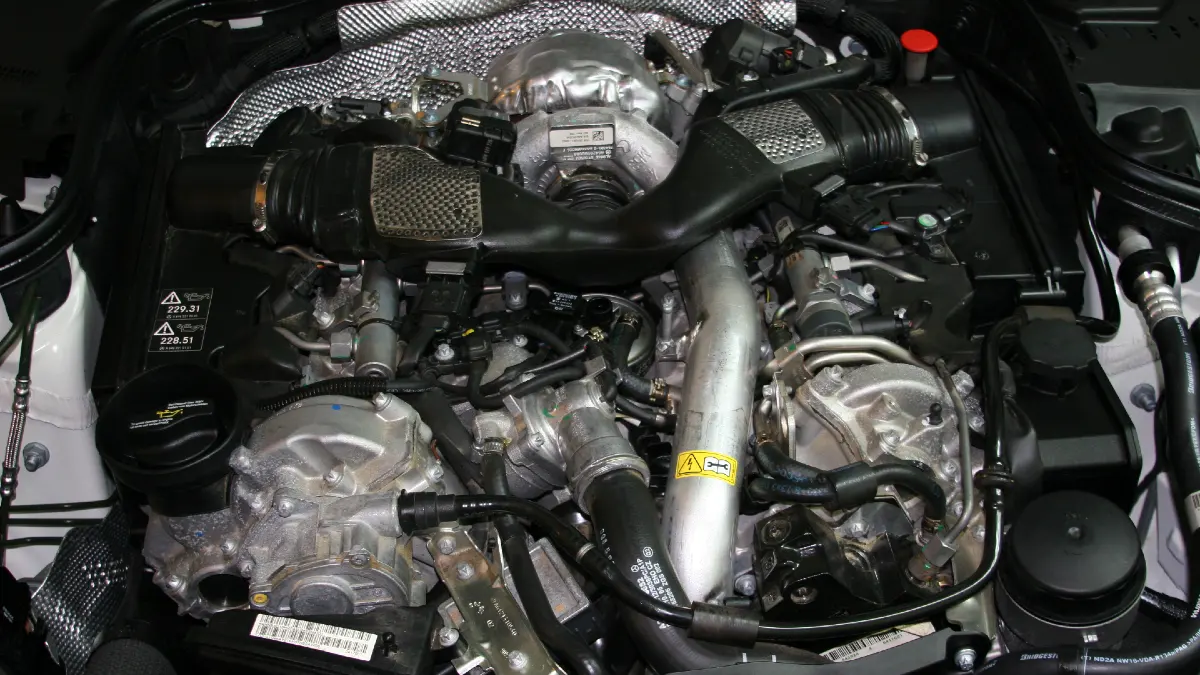
Balance shaft issues plague the otherwise robust Mercedes OM642 V6 diesel engine. This common problem manifests around 80,000 miles when the balance shaft gear wears prematurely, creating a distinctive rattling noise. Early warning signs include check engine lights and rough idling that progressively worsens. Repair costs typically range between $3,000 and $5,000 since the procedure requires substantial disassembly of the engine.
Oil cooler leaks frequently accompany these issues, contaminating the coolant system and causing overheating. Many owners report sludge buildup inside the engine when maintenance intervals stretch beyond recommendations. Swirl flap failures occur without warning, with broken pieces potentially entering cylinders and causing catastrophic damage.
Glow plug failures happen unexpectedly in colder climates, making winter starting unreliable. The complex emissions system struggles with long-term reliability, particularly the BlueTEC components that manage exhaust treatment. Fuel injectors develop microscopic cracks over time, reducing efficiency and increasing smoke production.
Some vehicles experience wiring harness degradation that triggers random electrical faults. Those who commit to rigorous maintenance schedules generally experience fewer issues, though repair costs remain significantly higher than comparable engines when problems do emerge.
7. Renault 2.0 dCi Diesel

Turbocharger failures haunt owners of the Renault 2.0 dCi diesel engine with alarming frequency. These failures typically begin with whistling noises followed by significant power loss, eventually requiring complete replacement at costs approaching $2,500. The oil feed pipes that supply the turbocharger regularly clog or crack, starving the unit of lubrication and accelerating wear.
Fuel injection issues create additional headaches, with common rail pressure problems triggering limp mode activation without warning. Injectors themselves become compromised by low-quality diesel fuel, developing spray pattern irregularities that reduce combustion efficiency. Many owners face EGR valve complications resulting in rough idle and poor cold-weather performance.
Carbon buildup throughout the intake system requires professional cleaning every 40,000 miles to maintain proper airflow. Timing chains stretch beyond acceptable limits, necessitating expensive replacement procedures before the 100,000-mile mark.
Oil pump failures strike without adequate warning signs, resulting in engine seizure when pressure drops suddenly. Cooling system components deteriorate prematurely, especially thermostat housings that crack and leak coolant. Electronics controlling engine functions develop intermittent faults that prove challenging for diagnostics.
Even with fastidious maintenance, this engine typically requires substantial financial investment throughout its service life.
8. Land Rover 3.0 SDV6 Diesel Engine

Oil pump failures present the most serious concern for Land Rover SDV6 diesel engines, often occurring without clear warning signs. This critical component can suddenly cease functioning, cutting off vital lubrication to engine bearings and causing catastrophic failure within minutes. Repair costs frequently exceed $7,000 when total engine replacement becomes necessary.
Timing chain tensioners wear prematurely, creating a characteristic rattling sound during cold starts that signals impending problems. Fuel injector seals harden and crack over time, allowing diesel to leak into the cylinder head and contaminate engine oil. Cooling system components struggle with longevity, particularly water pumps that fail around 60,000 miles.
The complex emissions control system requires regular maintenance to prevent sensor failures and subsequent performance issues. Turbocharger actuators develop electronic faults that result in inconsistent power delivery and acceleration lag. Crankcase ventilation systems clog with oil vapor deposits, increasing internal pressure and forcing oil past seals.
High-pressure fuel pumps wear prematurely, causing starting difficulties and rough running under load. Many owners report electrical gremlins affecting engine management systems, triggering check engine lights without clear fault codes. Those planning to keep these vehicles beyond warranty periods should budget for significant maintenance expenses.
9. Volkswagen 2.0 TFSI (EA113)

Excessive oil consumption stands out as the signature flaw of the Volkswagen EA113 petrol engine. Many owners report burning through a quart every 700 miles, far exceeding normal consumption rates. This issue stems from piston ring design flaws that allow oil to enter combustion chambers, producing blue smoke during acceleration. Cam follower problems create another major concern, as these components wear through prematurely and can cause catastrophic camshaft damage when left unaddressed.
Regular inspection every 20,000 miles proves necessary to prevent failure. Timing chain tensioners fail without warning, allowing chains to skip timing and potentially bend valves. Carbon accumulation on intake valves reduces performance steadily over time since direct injection systems spray fuel behind the valves rather than cleaning them naturally.
PCV system failures cause pressure issues throughout the engine, leading to oil leaks from various gaskets and seals. Fuel pumps commonly fail around 70,000 miles, leaving drivers stranded without warning. Ignition coil packs deteriorate prematurely, causing misfires and rough running conditions.
Water pump impellers crack and separate from drive shafts, leading to cooling system failures. Despite these issues, enthusiasts appreciate the engine’s tuning potential when properly maintained and modified to address known weaknesses.
10. Volvo 2.4 D5 Diesel Engine

Volvo’s D5 diesel engine earned respect for longevity while simultaneously frustrating owners with specific recurring issues. EGR valve clogging occurs with remarkable consistency, causing rough idling and occasional stalling at lower temperatures. Professional cleaning becomes necessary every 40,000 miles, adding significant maintenance costs.
Turbocharger failures happen without obvious warning signs beyond gradual power loss, resulting in repair bills exceeding $2,000. Fuel injectors develop internal wear patterns that create uneven spray patterns, reducing combustion efficiency and increasing emissions. Timing belt failures have left many owners facing major engine repairs when belts snap before scheduled replacement intervals. Volvo’s official replacement timeline appears optimistic compared to real-world experiences.
Engine mounts deteriorate faster than comparable vehicles, allowing excessive movement that stresses other components. Intake manifold swirl flaps break internally, with fragments potentially entering cylinders and causing extensive damage. Fuel filter housings crack in colder climates due to expansion during freeze cycles, leading to air introduction into fuel systems.
Mass airflow sensors provide inaccurate readings over time, causing poor performance and increased fuel consumption. Water pumps leak prematurely, requiring replacement before 100,000 miles in many cases. Despite these concerns, properly maintained D5 engines frequently surpass 200,000 miles of service, showcasing their fundamental durability when owners address known issues proactively.
11. Ford 1.6 TDCi Diesel (DV6)

Timing belt failures occur with alarming frequency in the Ford 1.6 TDCi diesel engine, often striking well before the scheduled 100,000-mile replacement interval. Cars affected by this issue typically experience catastrophic engine damage when the belt snaps, causing pistons to collide with valves. Repair costs frequently exceed $3,000 when significant internal damage occurs.
The engine also suffers from turbocharger problems that begin with oil feed pipe blockages, leading to inadequate lubrication and eventual failure. Warning signs include whistling noises during acceleration and noticeable power loss that worsens gradually. Many owners report crankshaft pulley wobble that appears around 60,000 miles, indicating imminent failure that can damage multiple components simultaneously.
Water pump leaks develop without obvious external signs, allowing coolant to contaminate the timing belt area and accelerate deterioration. Fuel injectors commonly develop internal wear patterns that create irregular spray patterns and reduce combustion efficiency. The engine control unit occasionally misinterprets sensor data, triggering check engine lights without clear fault codes.
Mechanics often recommend shortening the official maintenance intervals by at least 20,000 miles to prevent premature failures. Those who follow this advice generally experience fewer catastrophic issues.
12. BMW M54 Inline-6 Engine
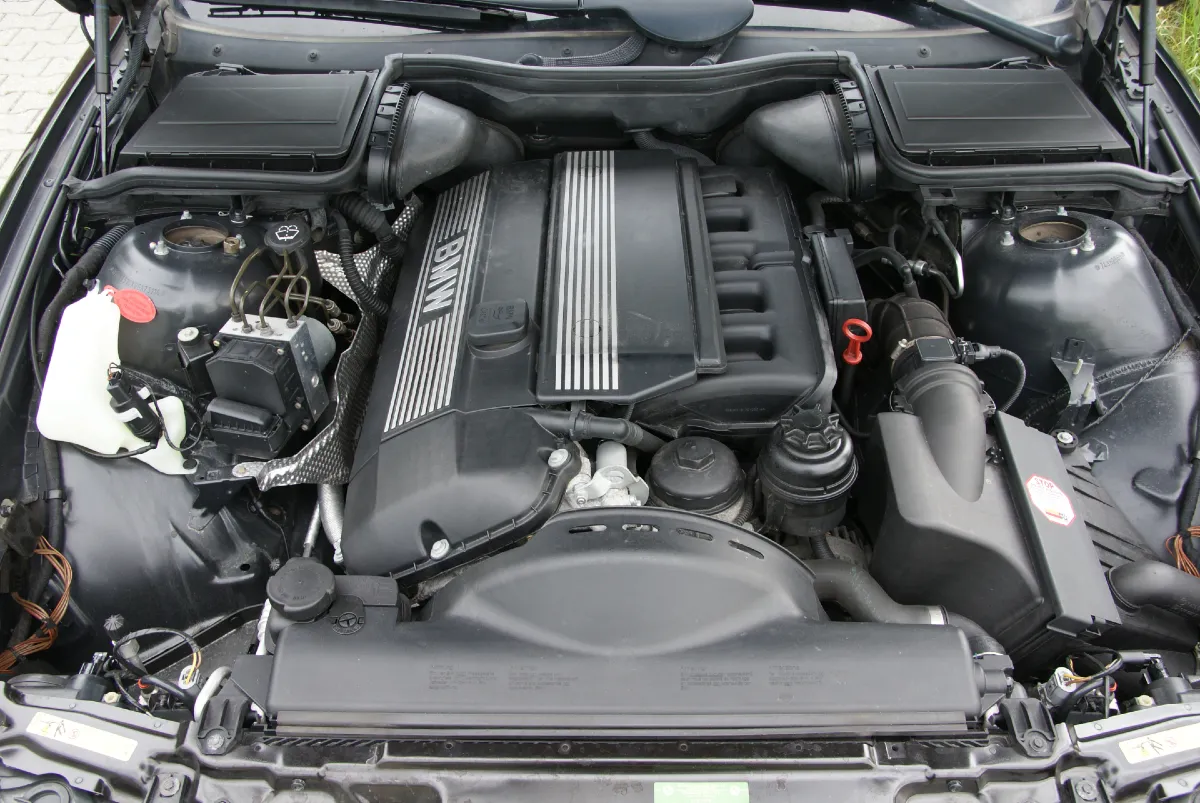
Oil consumption gradually increases in the BMW M54 inline-6 engine as mileage accumulates, with many owners reporting a quart disappearing every 750 miles after the 80,000-mile mark. This issue stems from valve guide wear that allows oil to enter combustion chambers during normal operation. Valve cover gasket leaks compound these problems by allowing oil to seep onto hot exhaust components, creating smoke and potential fire hazards.
The plastic cooling system components deteriorate prematurely, particularly the water pump impeller that can separate from its shaft without warning. Coolant leaks develop at thermostat housings and radiator connections, often going unnoticed until overheating occurs. VANOS system failures manifest through rough idle and hesitation during acceleration as the variable valve timing mechanism wears internally.
CCV system problems allow excessive crankcase pressure to build, forcing oil past various seals and gaskets. Secondary air injection pumps fail consistently, triggering check engine lights and failed emissions tests. Fuel injector O-rings harden and crack over time, allowing small fuel leaks that create distinctive odors. Camshaft position sensors develop intermittent faults, causing random stalling and difficult restarts.
While fundamentally sound in design, these engines require vigilant maintenance schedules to avoid cascading failures that significantly increase ownership costs.
13. Opel 1.9 CDTI Diesel Engine
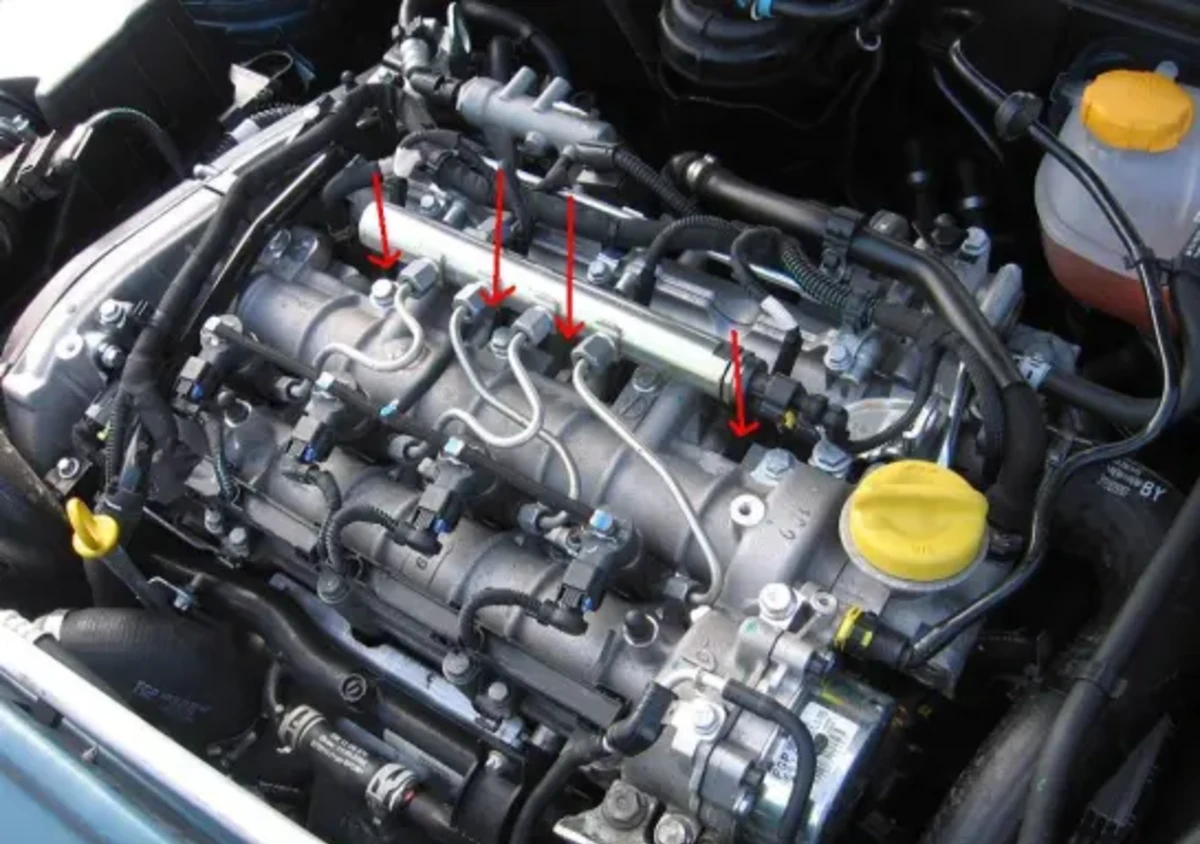
EGR valve problems plague the Opel 1.9 CDTI diesel engine with remarkable consistency, creating rough idle conditions and occasional stalling when carbon buildup restricts proper operation. Cleaning becomes necessary every 30,000 miles to maintain reliable performance, adding unexpected maintenance costs. Turbocharger failures typically begin with wastegate actuator issues that cause inconsistent boost delivery and power fluctuations during acceleration.
Complete turbocharger replacement commonly becomes necessary around 80,000 miles, costing owners roughly $1,800 including labor. Swirl flap mechanisms break internally, allowing metal fragments to enter cylinders and score walls, leading to compression loss and increased oil consumption.
Oil pump pickup tubes clog with sludge in engines that miss oil change intervals, resulting in oil pressure warnings and potential bearing damage. Camshaft wears accelerates in engines operating with reduced oil pressure, resulting in valve timing variations and performance degradation.
Fuel injectors develop microscopic cracks that allow uncontrolled fuel delivery and cylinder washing. Common rail pressure sensors provide inaccurate readings that confuse engine management systems, creating difficult diagnostic scenarios. Mass airflow sensors gradually lose accuracy, causing improper fuel metering and increased emissions.
Owners who commit to rigorous maintenance schedules generally experience fewer catastrophic failures, though repair costs remain significantly higher than average.
14. Jaguar 2.7 TDV6 Diesel

Fuel injector failures occur with surprising frequency in the Jaguar 2.7 TDV6 diesel engine, creating rough running conditions and excessive smoke production. Each injector costs approximately $400, with labor adding significantly to repair bills when multiple units require replacement. Turbocharger issues typically begin around 70,000 miles when internal bearings develop excessive play, creating distinctive whistling noises during acceleration.
Complete replacement costs approach $2,500 for each turbocharger, with many vehicles requiring both units to be replaced simultaneously. Oil cooler leaks allow engine oil to contaminate coolant, creating mayonnaise-like deposits throughout the cooling system. Cylinder head gasket failures increase in frequency after overheating events, with repair costs exceeding $4,000 due to complex disassembly requirements.
Timing chain tensioners wear prematurely, creating rattling noises during cold starts that signal impending problems. EGR valve clogging occurs regularly, reducing performance and increasing emissions when carbon deposits restrict proper operation. Water pump failures happen without warning, often resulting in roadside breakdowns and potential engine damage from overheating.
Crankshaft damper deterioration causes vibration that accelerates wear throughout the engine. Despite these concerns, some owners report reaching high mileages with proper maintenance, though few escape without experiencing at least some of these common issues.
15. Audi 1.8 TFSI (EA888)
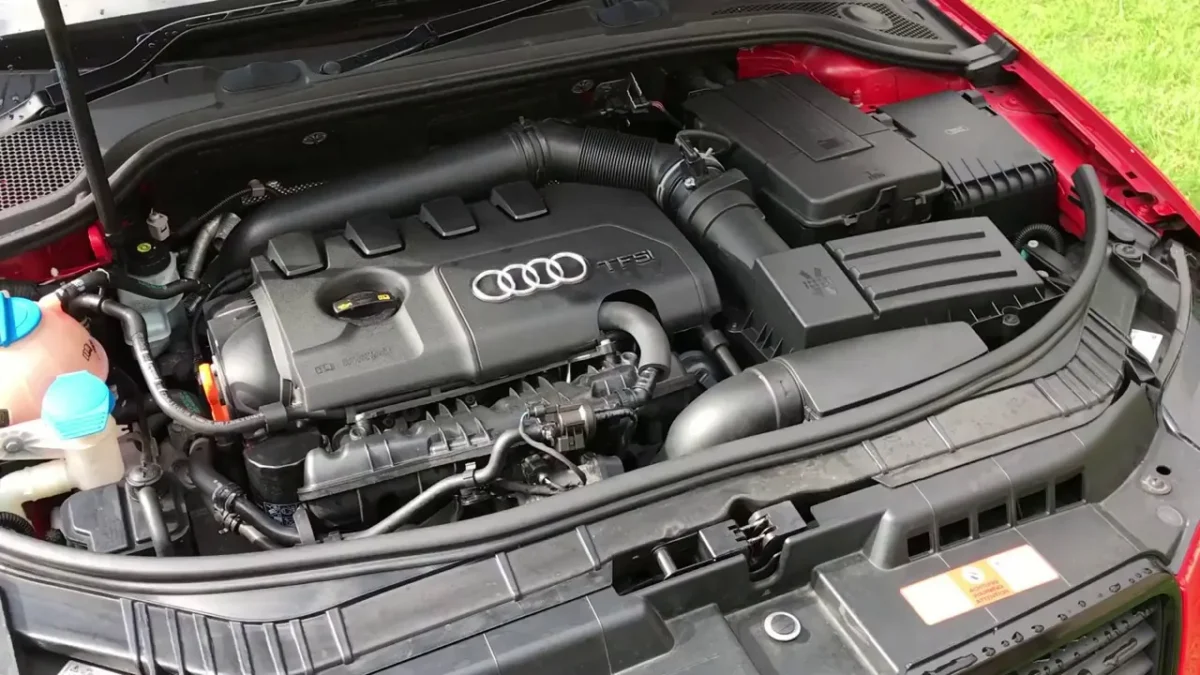
Timing chain issues emerge as the most concerning problem in the Audi 1.8 TFSI engine, with tensioners failing prematurely and allowing chains to skip timing. This typically occurs between 60,000 and 90,000 miles, often without significant warning signs beyond a subtle rattling noise during startup. Repair costs frequently exceed $3,000 when valves sustain damage during failure events.
Oil consumption gradually increases as mileage accumulates, with many engines using a quart every 600 miles after reaching 50,000 miles. This stems from piston ring design flaws that allow oil to enter combustion chambers during normal operation. Carbon accumulation on intake valves reduces performance steadily over time since direct injection systems spray fuel behind valves rather than cleaning them naturally.
Professional cleaning becomes necessary every 40,000 miles to maintain proper airflow. PCV system failures cause pressure imbalances throughout the engine, leading to oil leaks from various seals and gaskets. Water pump impellers crack and separate from drive shafts, causing cooling system failures without external leakage signs.
Fuel pressure regulators develop internal leaks that allow pressure to drop during acceleration, creating hesitation and reduced performance. Ignition coil packs fail randomly, causing misfires and rough running conditions. Despite these concerns, enthusiasts appreciate the engine’s tuning potential when properly maintained and modified to address known weaknesses.


